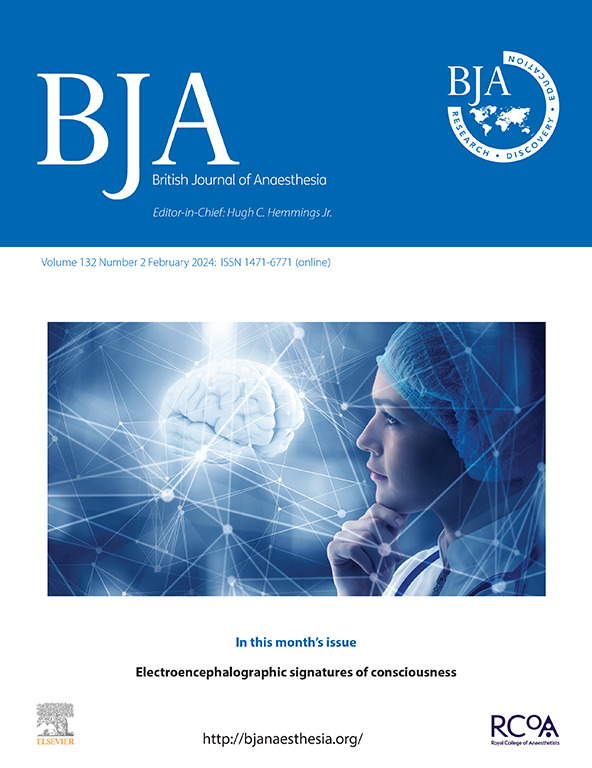深度学习模型用于识别和验证外科和危重患者的低血压内型
IF 9.1
1区 医学
Q1 ANESTHESIOLOGY
引用次数: 0
摘要
低血压与外科和危重病人的器官损伤和死亡有关。在临床实践中,治疗低血压仍然具有挑战性,因为它可能由各种潜在的血流动力学改变引起。我们的目的是使用无监督深度学习在外科和危重患者的大数据集中识别和独立验证低血压的内源性类型。本文章由计算机程序翻译,如有差异,请以英文原文为准。
Deep learning model to identify and validate hypotension endotypes in surgical and critically ill patients
Background
Hypotension is associated with organ injury and death in surgical and critically ill patients. In clinical practice, treating hypotension remains challenging because it can be caused by various underlying haemodynamic alterations. We aimed to identify and independently validate endotypes of hypotension in big datasets of surgical and critically ill patients using unsupervised deep learning.
Methods
We developed an unsupervised deep learning algorithm, specifically a deep learning autoencoder model combined with a Gaussian mixture model, to identify endotypes of hypotension based on stroke volume index, heart rate, systemic vascular resistance index, and stroke volume variation observed during episodes of hypotension. The algorithm was developed with data from 871 surgical patients who had 6962 hypotensive events and validated in two independent datasets, one including 1000 surgical patients who had 7904 hypotensive events and another including 1000 critically ill patients who had 53 821 hypotensive events. We defined hypotension as a mean arterial pressure <65 mm Hg for at least 1 min.
Results
In the development dataset, we identified four hypotension endotypes. Based on their physiological and clinical characteristics, we labelled them as: vasodilation, hypovolaemia, myocardial depression, and bradycardia. The same four hypotension endotypes were identified in the two independent validation datasets of surgical and critically ill patients.
Conclusions
Unsupervised deep learning identified four endotypes of hypotension in surgical and critically ill patients: vasodilation, hypovolaemia, myocardial depression, and bradycardia. The algorithm provides the probability of each endotype for each hypotensive data point. Identifying hypotensive endotypes could guide clinicians to causal treatments for hypotension.
求助全文
通过发布文献求助,成功后即可免费获取论文全文。
去求助
来源期刊
CiteScore
13.50
自引率
7.10%
发文量
488
审稿时长
27 days
期刊介绍:
The British Journal of Anaesthesia (BJA) is a prestigious publication that covers a wide range of topics in anaesthesia, critical care medicine, pain medicine, and perioperative medicine. It aims to disseminate high-impact original research, spanning fundamental, translational, and clinical sciences, as well as clinical practice, technology, education, and training. Additionally, the journal features review articles, notable case reports, correspondence, and special articles that appeal to a broader audience.
The BJA is proudly associated with The Royal College of Anaesthetists, The College of Anaesthesiologists of Ireland, and The Hong Kong College of Anaesthesiologists. This partnership provides members of these esteemed institutions with access to not only the BJA but also its sister publication, BJA Education. It is essential to note that both journals maintain their editorial independence.
Overall, the BJA offers a diverse and comprehensive platform for anaesthetists, critical care physicians, pain specialists, and perioperative medicine practitioners to contribute and stay updated with the latest advancements in their respective fields.

 求助内容:
求助内容: 应助结果提醒方式:
应助结果提醒方式:


